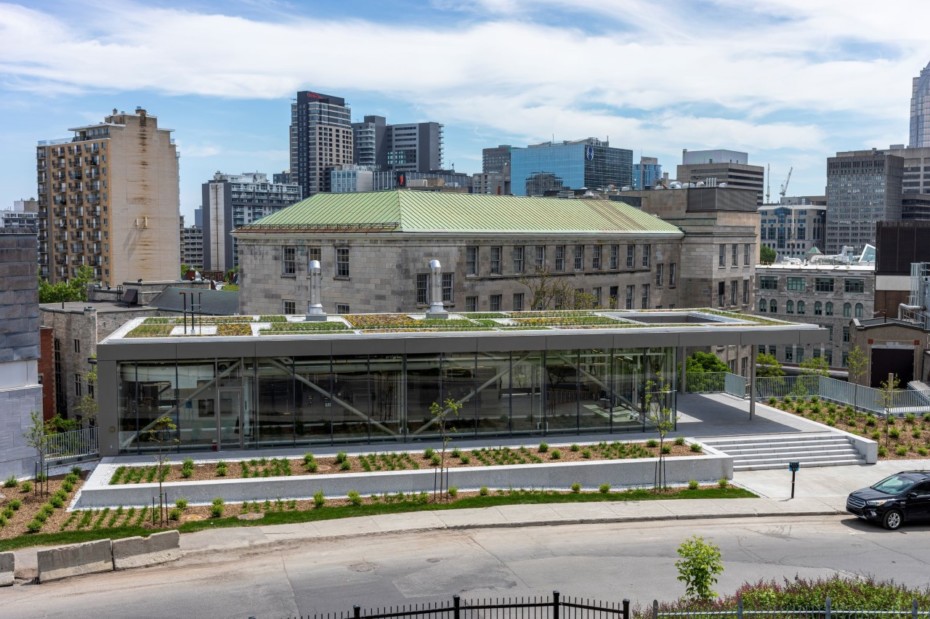
In cases of power failures, at McGill as anywhere else, the priority is to preserve lives and safety. Then comes the protection of physical installations. But not far behind is the preservation of research data and samples.
To do that, a reliable emergency electrical system is essential. And at a research-intensive university like McGill, with ever-increasing energy needs, that system must be a robust one.
In 2012, when an old diesel generator in the downtown powerhouse had to be decommissioned, the University rented a mobile unit as a temporary replacement (that is what is in that container between the Ferrier and the James Administration buildings – it will eventually be moved).
To increase its energy capacity, the University planned the acquisition of not just one, but two new permanent generators. However, there was not enough room in the powerhouse (located next to the Ferrier Building), or in any other building nearby. A new building was needed, and not too far from energy-hungry lab buildings like Rutherford or Wong.
Challenging construction site
Thanks to a grant from the federal Post-Secondary Institutions Strategic Investment Fund, which funded approximately half of the $11.9 million needed for the new facility, McGill was able to launch the construction in 2017.
The only space available was the parking lot (or “bunker”) north of the Ferrier Building on Doctor-Penfield Avenue. Building on this site was not without its challenges.
“First of all, the site is on a slope, which complicates access for machinery,” explains Project Manager Johanne Guertin, from the GPH firm. “Also, there are steam conduits that run through the site and a 48-inch City of Montreal water main on two sides, along Doctor-Penfield and along the Wong Building. We had to make sure those were protected.”
One of the trickiest phases was the pile driving when the foundation was built. “As there is sensitive research equipment in the Wong Building, right next to the site, we installed accelerometers – a device that measures vibration levels – in several places inside the building so we could monitor the vibration levels throughout the pile driving work,” Guertin says.
Construction started in November 2017 and finished in early 2019 (see the time-lapse video below).
Uninterruptible power supply
The two generators housed in the new building are powered by natural gas. They will service a dozen buildings on lower campus.
“They not only provide a robust and reliable emergency system, but they are a much greener choice, emitting 30 per cent fewer greenhouse gas emissions than diesel-powered ones,” says Jérôme Conraud, Interim Director, Utilities and Energy Management. “We also have room in the new building for a third generator, should we need it down the road.”
The generators will also be used during peak energy consumption periods. “During extremely cold weather, Hydro Québec calls on its clients to reduce electricity use, so as to reduce the strain on the province’s power infrastructure. Using the generators will help us increase our contribution to that collective effort,” Conraud adds.
For more information about construction at McGill, visit this site.
